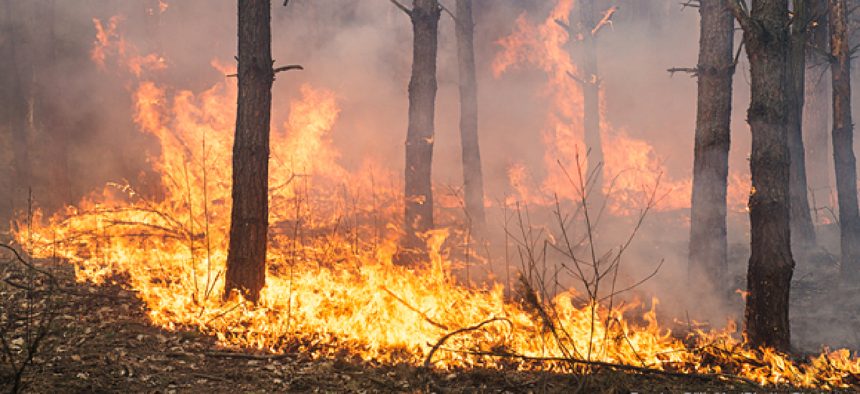Fighting fires with data

The California Department of Forestry and Fire Protection is using simulation technology that collects publicly available data from multiple sources and overlays it on a map so that firefighters can predict a blaze’s behavior in real time.
The California Department of Forestry and Fire Protection (CAL FIRE) is using simulation technology to help predict and prepare for where wildfires are likely to spread.
The solution from Technosylva, a maker of GIS-enabled software solutions for wildfire protection planning, collects publicly available data from multiple sources and overlays it on a map so that firefighters can estimate a blaze’s behavior in real time. Specifically, CAL FIRE is using Technosylva’s FireCast, which forecasts risk associated with electric utility assets over a four-day horizon, and FireSim, which offers on-demand prediction of fire spread.
The solution combines weather data, topography and weather conditions along with data on the amount and moisture of fuel, the vegetation and human-created structures that could burn in a fire’s path, said Christine McMorrow, CAL FIRE resource management communications officer. “It pulls that data from all these different sources in an instant, so it allows our fire managers to make predictions on the spot about where a fire is moving based on the weather conditions, the fuel load, the topography, the values at risk in that area.”
In the 1940s and ’50s, fire managers made those predictions by hand, spending several days on the task. As technology advanced and the internet resources became available, the process sped up, but was still largely manual, McMorrow said.
“All of that is now happening in an instant, and our battalion chiefs and incident commanders and folks in our command centers have this technology at their fingertips,” she said. “Not only do they have it installed on their desktops, but it’s an app on your phone so you can show up at the scene and pull up the Technosylva data and instantly have information about what’s happening on the ground.”
Each user of the technology logs in and can enter a starting point with the fire’s latitude and longitude. Then the solution pulls in data such as wind direction and speed from the National Weather Service and combines it with the type of fuel and topography to predict the rate and direction of spread, McMorrow said.
“You overlay that information onto a map of the area, especially if you’re in or near populated areas,” she explained. Knowing how quickly a fire can get to a neighborhood helps CAL FIRE “make decisions about resources, about working with the local sheriff’s department for evacuation notices,” she said.
CAL FIRE began rolling the technology out about a week before a “lightning siege” struck in mid-August 2020, sparking the state’s largest wildfire season in modern history. By the end of 2020, nearly 10,000 fires had burned more than 4.2 million acres, damaged almost 11,000 structures and killed 33 people.
Although fire managers were able to use the technology to make some decisions related to the 2020 fires, the full rollout of it was delayed because of the season’s intensity, McMorrow said. CAL FIRE is on track to have all 21 units and six contract agencies trained and on board by this fire season, which typically starts in May or June, she said.
The technology has made the biggest impact in predicting potential fire growth. If a
lightning strike starts a fire, the simulator software within Technosylva will predict the path and speed of the blaze. It’s also helped inform where to place a fire and contingency lines “and then also time frames for when we need to get those done,” she said.
CAL FIRE continues to integrate more data into the solution, McMorrow said. For instance, they’re working now to incorporate its Auto Vehicle Locator System, which shows where engines and battalion chiefs are located, and will later add Auto Flight Follower data, which tracks CAL FIRE aircraft.
“This just eliminates a step of coordinating between datasets,” McMorrow said.
In Los Angeles, the fire department is using another prediction technology called WIFIRE Firemap, a real-time interface that simulates and estimates how quickly a fire might spread. Funded by the National Science Foundation, the technology connects real-time weather information, infrared images from fire planes, satellite maps of terrain and brush, and other data to predict what a fire may do. What’s more, WIFIRE learns from past inaccuracies.
Other WIFIRE partners include the Orange County Fire Authority, Ventura County Fire Department and state Public Utilities Commission, all in California.





